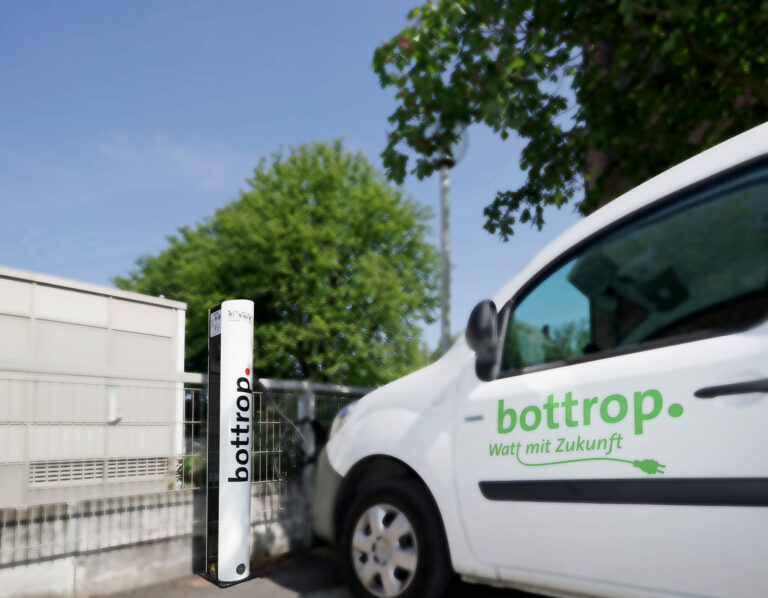Electromobility in Bottrop will be promoted based on the electromobility concept developed by IKEM and Becker Büttner Held (BHH). In four years, the number of e-cars is expected to more than quadruple. This will reduce noise and pollutant emissions significantly. In order for the mobility transition to succeed, planners, administration and business must create the right conditions.
Charging infrastructure
In addition to the electrification of municipal and commercial vehicle fleets, our concept provides recommendations for action for expanding the charging infrastructure.
There are currently a total of 70 charging points at 36 locations in Bottrop. Due to the rapidly increasing market share of e-cars, we have recommended the construction of around 200 public charging points in the city by 2025. There is a growing demand, especially in the outskirts of the city center and in the city districts. “The charging points are being built by private providers. We have a clear plan where the expansion makes sense,” says Müller, the technical assistant.
As one of the co-authors of the concept, Maxim Blankschein (IKEM) explains that only the locations for public charging stations are recommended in the concept. “Around 60 to 80 percent of the charging processes take place in private spaces.”
Commercial fleets
Another focus of the concept is on commercial fleets. To this end, the authors examined the companies Niggemeier and Leurs (elevator and conveyor technology), Deutsches Rotes Kreuz Bottrop, REWE Gödecke and DWT Handelsgesellschaft für Pneumatic Tool Technology. These reference companies are examples of different usage scenarios. Some companies already have their own photovoltaic systems (PV systems), battery storage systems, electric vehicles, charging points and charging load management systems. “There was great willingness to work together,” says Matthias Puffe from BBH. Puffe can see that advice on energy management and funding offers is worthwhile from the fact that the companies involved expanded their e-car fleets while the concept was being drawn up.
We see very high potential for electrification in the municipal vehicle fleet. 96 percent of urban vehicles cover an average distance of less than 100 kilometers per day. The driving performance is therefore within the practical range of application of electric vehicle models. In addition to the construction of PV systems on municipal roofs, the experts recommend centralized fleet management for the municipal vehicle fleet. Klaus Müller wants to follow up on these recommendations. He sees a positive effect when employees use urban e-cars instead of their private combustion engines for business trips. The necessary infrastructure should be taken into account in the planned extension to the town hall.
It took about a year to develop the 165-page concept. The results will now be presented to politicians in the coming weeks. Matthias Puffe from BBH sees this as the basis for more e-mobility: “We give the recommendations. The decisions will now be made in the city.”


